Abstract
In accordance with the recommendations of the report of a WHO Coordination Meeting on Venoms and Antivenoms, methods have been developed for the assessment of lethal, defibrinogenating, procoagulant, haemorrhagic, and necrotizing properties of venoms, and used to study 53 venoms from 30 different species of snakes of medical importance throughout the world. The venoms studied included Echis carinatus (Iran), Naja naja kaouthia (Thailand), Notechis scutatus (Australia), Trimeresurus flavoviridis (Japan), Vipera russelli (Thailand), and Crotalus atrox (USA), which comprise six of the eight venoms designated by WHO as international reference venoms (IRVs). (C. atrox venom replaced C. adamanteus venom, as an adequate supply of the latter was not available.) The tests used were simple and should be reproducible in other laboratories throughout the world. Procedures for assaying neuromuscular paralytic activity and systemic myotoxic activity have yet to be developed.
The tests will be used to assay the neutralizing potency of both international standard antivenoms (raised using the IRVs) and new and currently available commercial antivenoms. Such studies should result in the production of more potent antivenoms for use in both developing and developed countries, and improve the understanding and management of snake bite throughout the world.
Full text
PDF

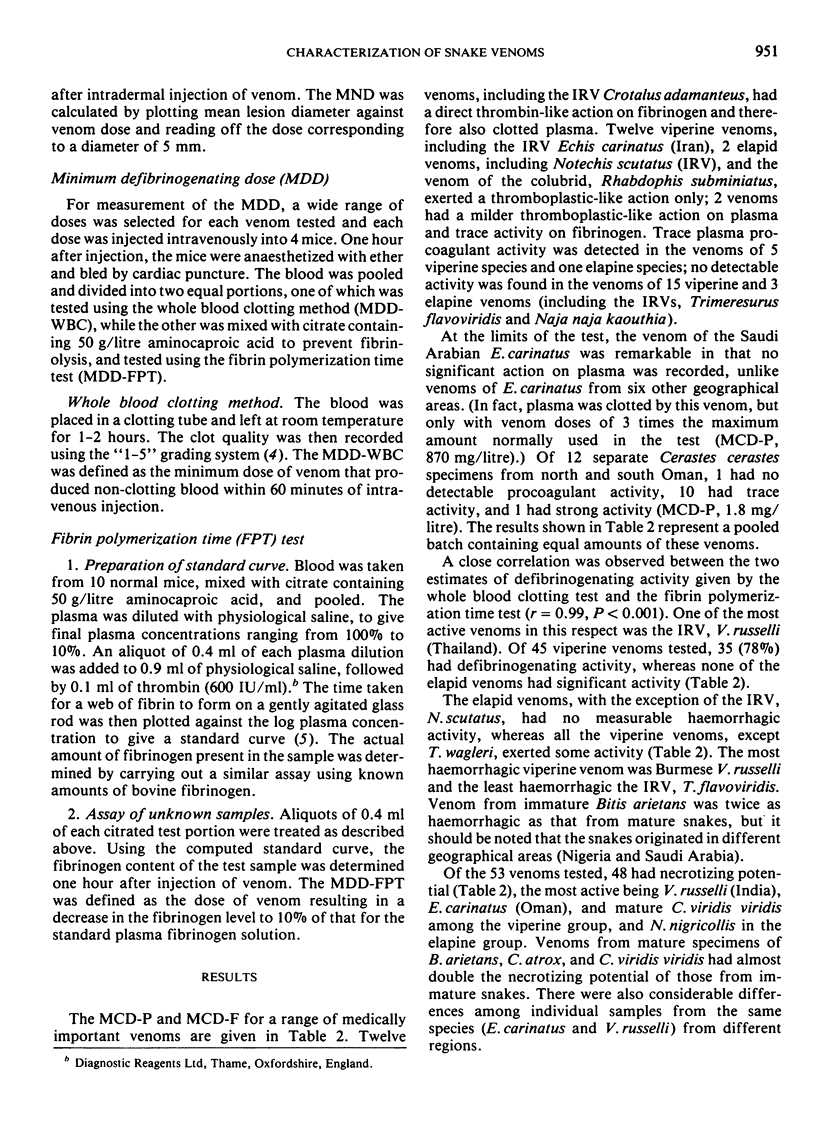
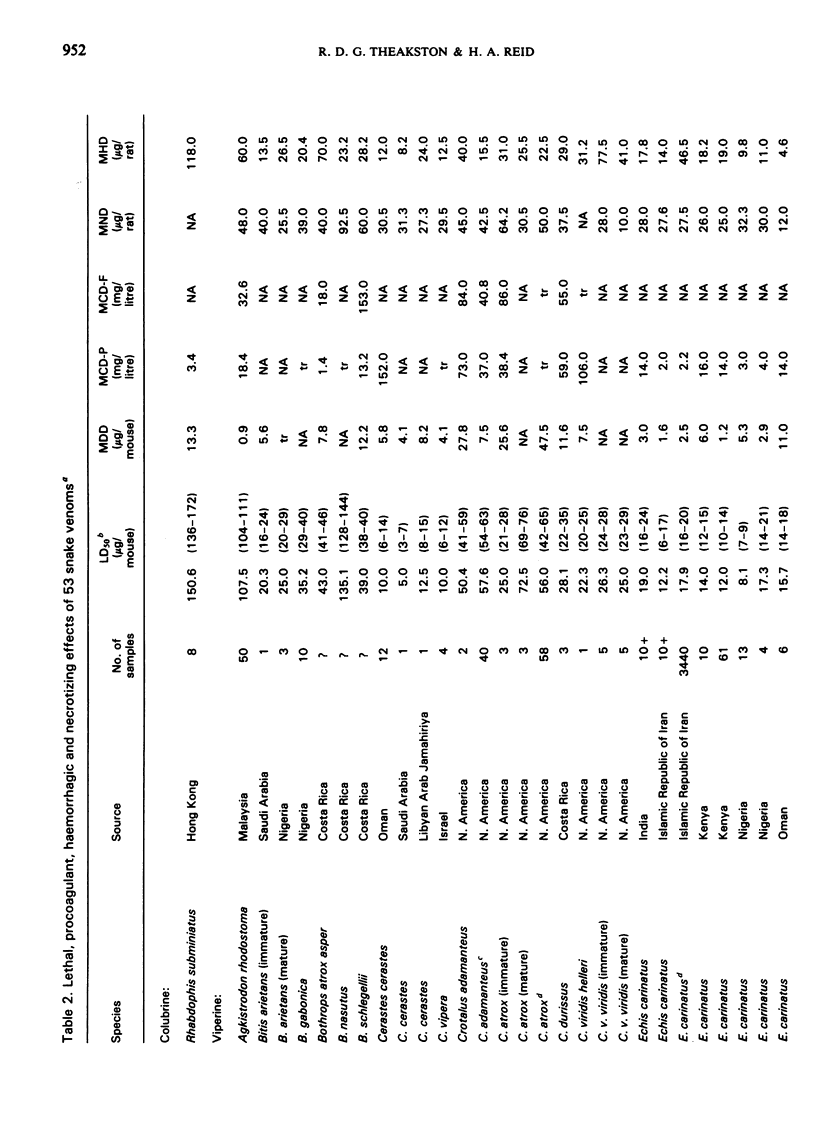
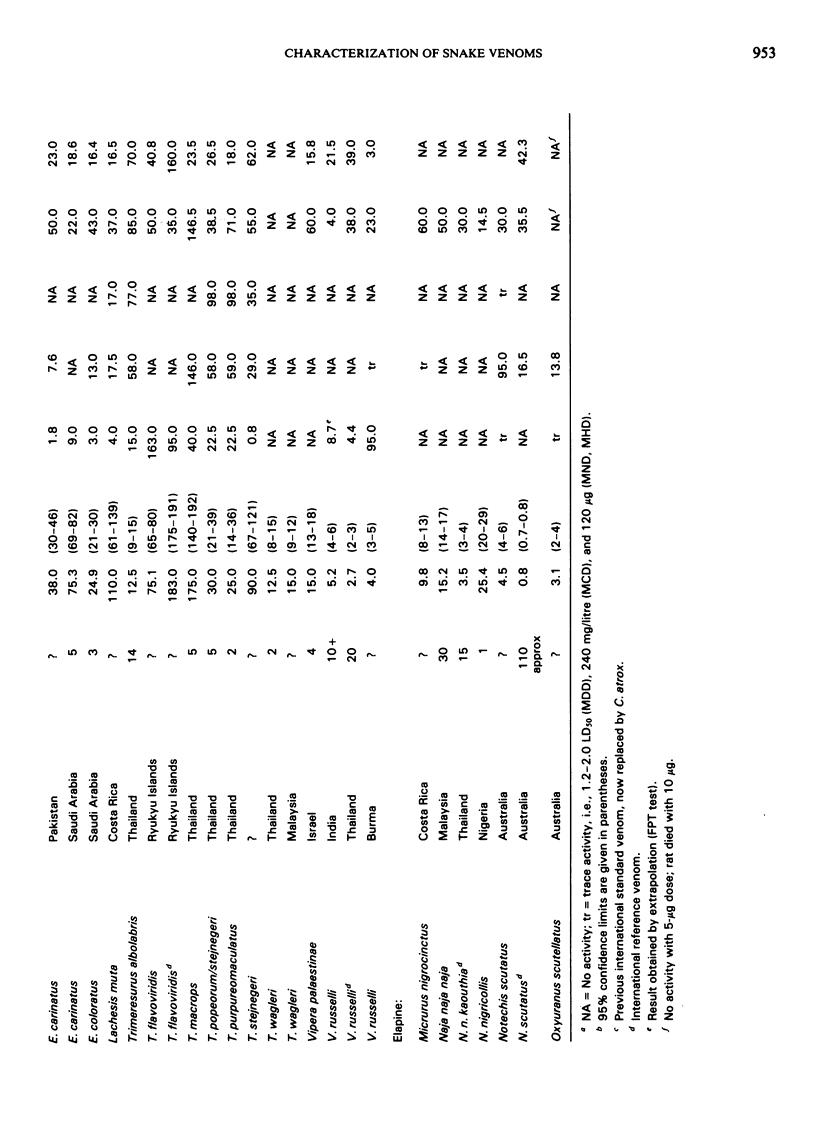
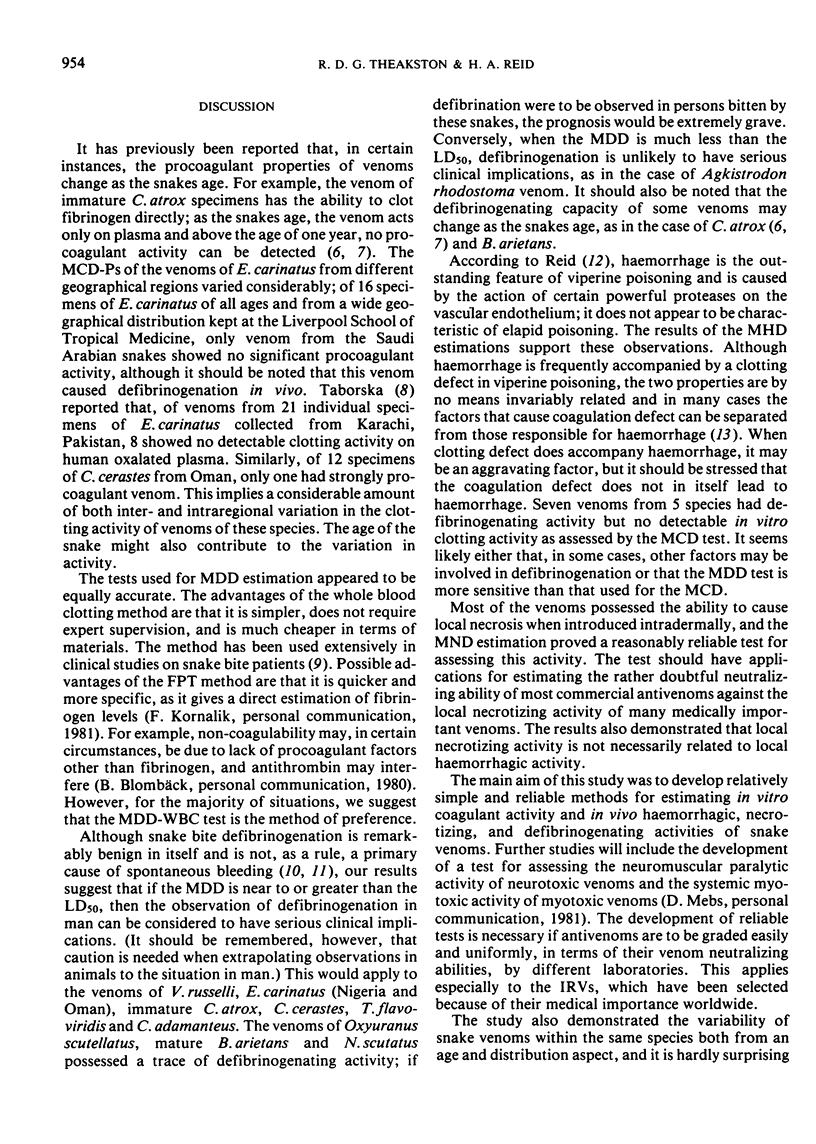
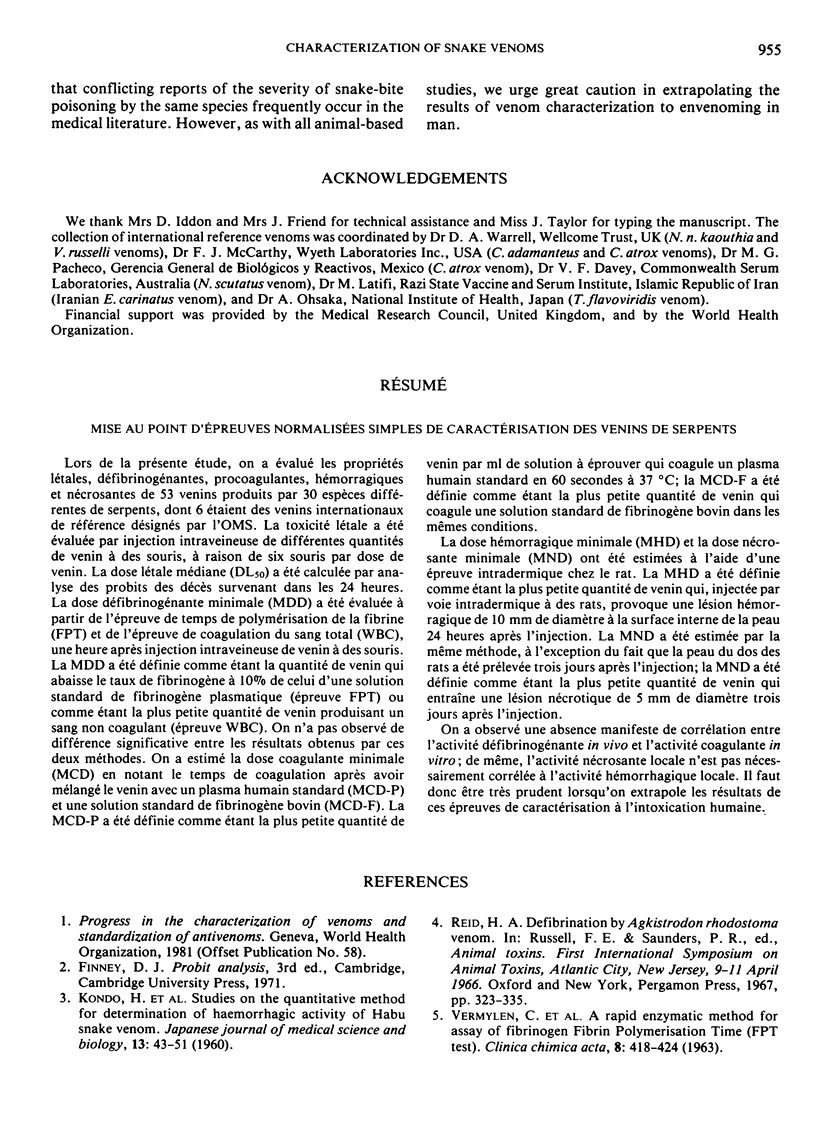
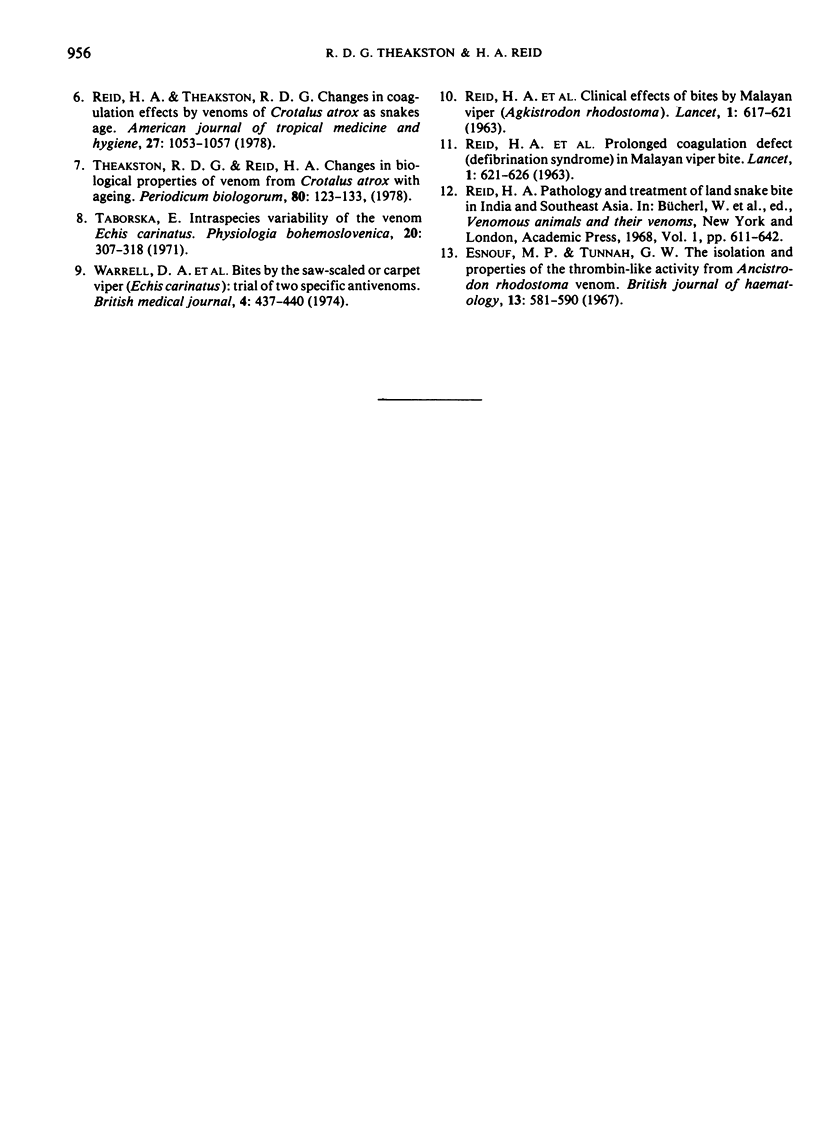
Selected References
These references are in PubMed. This may not be the complete list of references from this article.
- Esnouf M. P., Tunnah G. W. The isolation and properties of the thrombin-like activity from Ancistrodon rhodostoma venom. Br J Haematol. 1967 Jul;13(4):581–590. doi: 10.1111/j.1365-2141.1967.tb00765.x. [DOI] [PubMed] [Google Scholar]
- REID H. A., CHAN K. E., THEAN P. C. Prolonged coagulation defect (defibrination syndrome) in Malayan viper bite. Lancet. 1963 Mar 23;1(7282):621–626. doi: 10.1016/s0140-6736(63)91269-8. [DOI] [PubMed] [Google Scholar]
- REID H. A., THEAN P. C., CHAN K. E., BAHAROM A. R. Clinical effects of bites by Malayan viper (Ancistrodon rhodostoma). Lancet. 1963 Mar 23;1(7282):617–621. doi: 10.1016/s0140-6736(63)91268-6. [DOI] [PubMed] [Google Scholar]
- Reid H. A., Theakston R. D. Changes in coagulation effects by venoms of Crotalus atrox as snakes age. Am J Trop Med Hyg. 1978 Sep;27(5):1053–1057. doi: 10.4269/ajtmh.1978.27.1053. [DOI] [PubMed] [Google Scholar]
- Tãborskã E. Intraspecies variability of the venom of Echis carinatus. Physiol Bohemoslov. 1971;20(4):307–318. [PubMed] [Google Scholar]
- VERMYLEN C., DE VREKER R. A., VERSTRAETE M. A rapid enzymatic method for assay of fibrinogen fibrin polymerization time (FPT test). Clin Chim Acta. 1963 May;8:418–424. doi: 10.1016/0009-8981(63)90080-9. [DOI] [PubMed] [Google Scholar]
- Warrell D. A., Davidson N. M., Omerod L. D., Pope H. M., Watkins B. J., Greenwood B. M., Ried H. A. Bites by the saw-scaled or carpet viper (Echis carinatus): trial of two specific antivenoms. Br Med J. 1974 Nov 23;4(5942):437–440. doi: 10.1136/bmj.4.5942.437. [DOI] [PMC free article] [PubMed] [Google Scholar]


